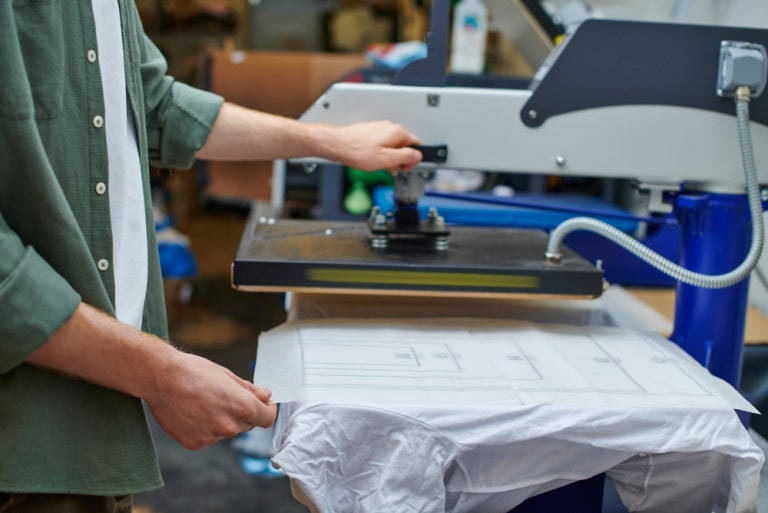Color Your World: Tips for Vibrant and Long-Lasting T-Shirt Printing

Colorful, vibrant t-shirt designs have become a fashion staple today. Whether running a clothing business or planning to print custom t-shirts for an event, achieving vibrant and long-lasting prints is essential.
This guest post will explore tips and tricks to help you achieve professional-looking, durable t-shirt prints that will stand out.
Choosing the Right Fabric
When it comes to t-shirt printing, the fabric you choose makes a huge difference in the final result. Look for high-quality fabrics that work well with different inks and printing methods.
During women’s or custom men’s t shirt printing, avoid fabrics with loose weaves or rough textures, as they can affect the quality of your print.
Screen Printing Technique
One of the most popular methods for printing t-shirts is screen printing. It offers excellent color saturation and durability. However, to achieve outstanding results, proper technique is vital while making customizable clothing:
- Artwork Preparation: Ensure that your artwork is clear and high-resolution. Any imperfections or fuzziness in the design can translate into a poor-quality print.
- Screen Set-up: Choose screens with the appropriate mesh count based on the complexity of your design. Higher mesh counts generally work best for fine details, while lower mesh counts suit more prominent elements or solid areas.
- Ink Selection: Use high-quality inks formulated explicitly for fabric screen printing. When choosing your ink, consider color vibrancy, opacity, washability, and longevity.
- Curing Process: After printing, ensure you cure your shirts properly using heat or UV exposure according to ink manufacturer instructions. Proper curing ensures that colors stay vibrant even after repeated washings.
Direct-to-Garment Printing (DTG)
For intricate designs or low-quantity orders, direct-to-garment (DTG) printing may be a better option than traditional screen printing while running your online store:
- Compatibility Check: Ensure your chosen fabric is compatible with DTG printing. Certain fabrics, such as polyester or garments treated with water repellants, may not work well with this method.
- Pre-Treatment: Pre-treating the fabric enhances color vibrancy and washability when printing dark-colored garments. Follow manufacturer instructions for accurately applying the pre-treatment solution.
- Printing Quality: Properly calibrate your printer for optimal print quality. Adjust settings like ink saturation, resolution, and dot placement to achieve the desired results.
- Drying and Curing: After printing, ensure the garment is heated or air-dryed before curing it in a heat press machine, following specific time and temperature recommendations.
Heat Transfer Vinyl (HTV)
Heat transfer vinyl (HTV) offers versatility and durability for custom t-shirt designs:
- Design Preparation: Use graphic design software suitable for creating vector graphics that can be cut using a vinyl cutter. Ensure that all elements of your design are correctly sized and aligned.
- Cutting Process: When cutting HTV, choose the appropriate blade depth depending on your vinyl thickness to prevent fraying or incomplete cuts.
- Application Techniques: Follow proper heat application techniques based on the type of HTV you are using (e.g., adhesive, flocked, glitter). Different types may require variations in temperature and continuous or firm pressure during application.
- Peeling Technique: Once applied, allow the HTV to cool before gently peeling off the carrier sheet at an angle to prevent unintentionally lifting any part of the design.
Proper Equipment Maintenance
Keeping your printing equipment in good shape ensures consistent, high-quality prints:
- Screen Cleaning: Regularly clean your screens after each use by removing excess ink with a screen cleaning solution or warm, soapy water, followed by thorough rinsing and drying.
- Printer Maintenance: Follow manufacturer guidelines for cleaning DTG printers regularly, including flushing the print head, cleaning clogged nozzles, and performing regular maintenance routines.
- Heat Press Maintenance: Monitor heat press machine performance regularly by checking temperature accuracy, pressure uniformity, and any signs of wear or malfunction.
Conclusion
Achieving vibrant and long-lasting t-shirt prints requires attention to detail during each printing process step. By choosing the suitable fabric, mastering the different printing techniques like screen printing, DTG, or HTV, and properly maintaining your equipment, you’ll be able to deliver professional-quality t-shirts that stand out.
Remember to take your time with each project and continuously refine your skills for exceptional results every time you print.



